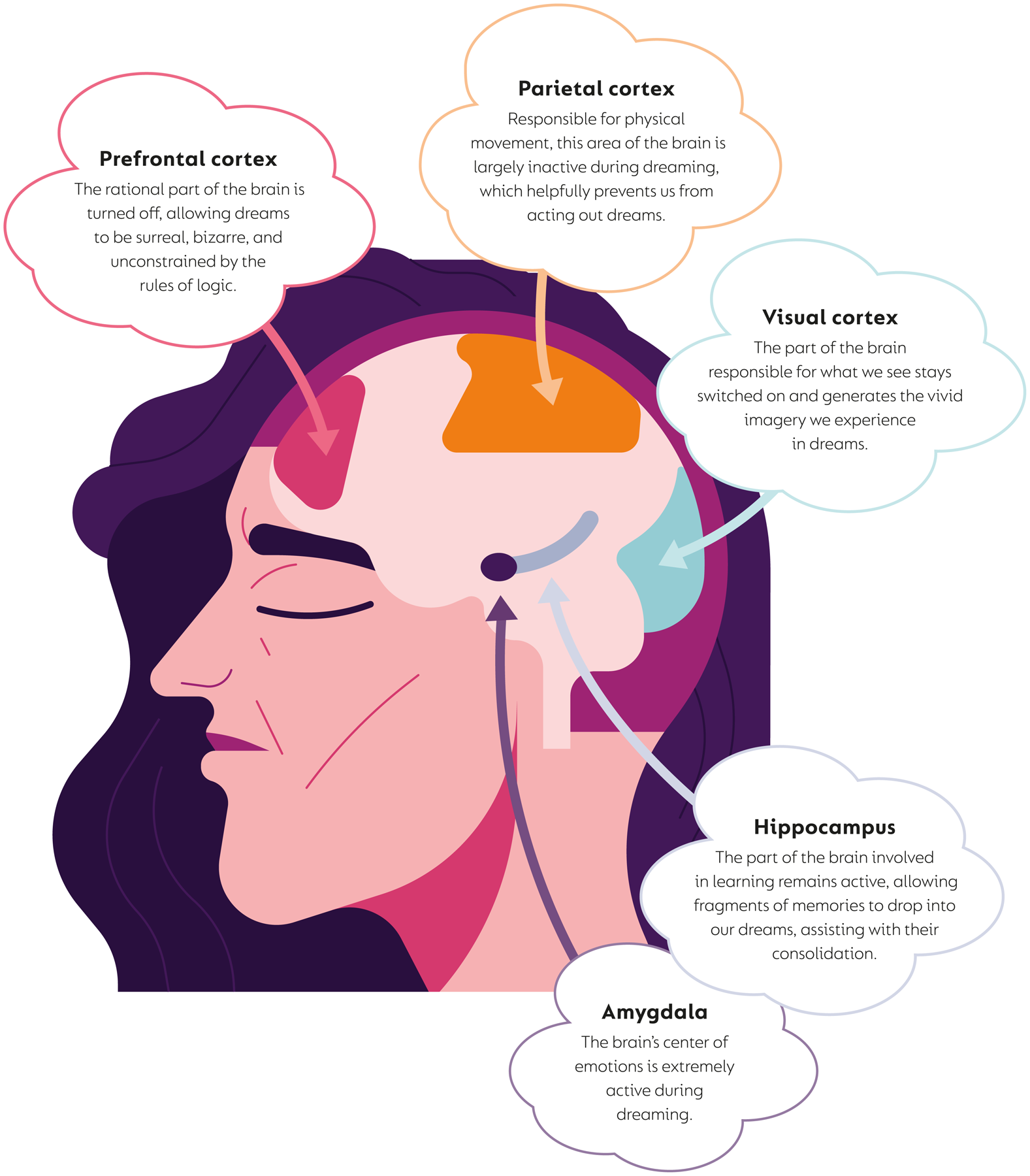Dreaming
Sleep scientists are in agreement that to a greater or lesser extent, we all dream. As to the precise purpose and function of dreaming, there is no consensus—but research shows that when we do dream, much of the brain is still highly active.
Dreams are essentially a collection of thoughts and emotions unique to each person that usually (but not always) take place during REM sleep. For thousands of years, humans have sought to find meaning in their dreams, and there are many theories as to why we dream—from the idea that dreams are a stage on which we can rehearse social interaction or practice our responses to threatening situations, to the suggestion by the pioneer of psychoanalysis Sigmund Freud that they somehow represent our deepest wishes or unconscious, repressed desires.
Whether these theories hold any truth is still not clear, but there is an increasing body of scientific evidence that suggests dreaming might play an important role in the processing of memories and emotions, allowing us to “relive” certain events and feelings as we sleep in order to help the brain make sense of and store them as memories. REM sleep in particular seems to play a role in regulating our emotions, and as most of our dreams occur during the REM stage, this might also explain why our dreams are often vivid and super-charged with feelings.
When it comes to the question of whether dreaming is important for sleep itself, the fact that you dream at all is a strong indicator of REM sleep and a marker of good sleep—you can only reach the REM stage if sleep is uninterrupted. Another benefit for sleep quality is that dreaming has been shown to block out certain external noises, so it can play a role in helping you stay asleep.
The dreaming brain
With advances in measuring brain activity, scientists are now able to pinpoint the specific areas of the brain that are more active during the dream state. These discoveries may help unlock the mysteries of precisely how and why we dream.

n Double-tap image to read the labels
Prefrontal cortex
The rational part of the brain is turned off, allowing dreams to be surreal, bizarre, and unconstrained by the rules of logic.
Parietal cortex
Responsible for physical movement, this area of the brain is largely inactive during dreaming, which helpfully prevents us from acting out dreams.
Visual cortex
The part of the brain responsible for what we see stays switched on and generates the vivid imagery we experience in dreams.
Hippocampus
The part of the brain involved in learning remains active, allowing fragments of memories to drop into our dreams, assisting with their consolidation.
Amygdala
The brain’s center of emotions is extremely active during dreaming.
